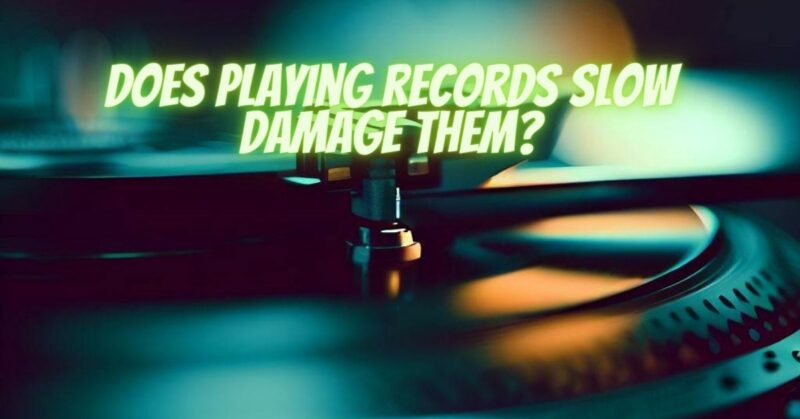Vinyl records, celebrated for their analog warmth and immersive listening experience, have been a source of joy for music enthusiasts for generations. However, a common question that often arises is whether playing records at slower speeds—such as 33 1/3 RPM (revolutions per minute) for 45 RPM records—can lead to damage. In this article, we will delve into the effects of playing records at slower speeds, dispelling myths and providing insights into responsible vinyl playback.
Understanding Record Speeds
To grasp the implications of playing records at slower speeds, it’s crucial to understand the various playback speeds for vinyl records:
- 33 1/3 RPM: Commonly referred to as “33s,” records played at this speed are standard LPs (Long Plays). They typically contain full-length albums.
- 45 RPM: These records, often called “45s,” are typically singles or EPs (Extended Plays). They are played at a higher speed and have a shorter duration.
- 78 RPM: Although less common today, these records are part of the historical legacy of vinyl. They are played at a faster speed and are associated with early recordings.
Playing Records at Slower Speeds: The Myth
One misconception regarding vinyl records is that playing them at slower speeds, particularly when using a 33 1/3 RPM setting for 45 RPM records, can lead to damage. This notion may stem from concerns about excessive stylus wear, potential groove damage, or alterations in sound quality.
The Reality: Playing Records Slowly
Playing vinyl records at slower speeds, when done correctly within the prescribed ranges, does not inherently lead to damage. In fact, most turntables are designed to accommodate multiple playback speeds, including the ability to play 45 RPM records at 33 1/3 RPM without causing harm.
Consider these factors:
- Turntable Design: Modern turntables are equipped with adjustable speed settings and tonearm adjustments that allow for smooth and controlled playback at both standard and non-standard speeds.
- Proper Stylus and Cartridge Setup: Maintaining a well-aligned stylus and properly calibrated cartridge is essential for preserving both your records and the stylus. This ensures that the stylus maintains proper contact with the record grooves.
- Responsible Playback: Using the correct speed setting for a record (33 1/3 RPM for LPs and 45 RPM for 45s) is vital. Playing records at significantly slower speeds not intended for the record can result in distorted sound and potential groove damage.
- Stylus and Cartridge Maintenance: Regularly inspect and clean your stylus, and replace it when signs of wear are evident. This practice helps minimize potential groove damage.
- Avoid Excessive Tracking Force: Set the tracking force (stylus pressure on the record) within the manufacturer’s recommended range to avoid excessive wear and damage.
Playing records at slower speeds, when done correctly within the prescribed range and with proper turntable setup, does not inherently damage vinyl records. Modern turntables are designed to handle various playback speeds, and responsible vinyl playback practices can help ensure the longevity of both your records and your stylus.
Ultimately, the love for vinyl records transcends concerns about playback speed. Enjoying vinyl music at the intended speed—whether 33 1/3 RPM or 45 RPM—allows you to savor the timeless analog sound and the unique tactile experience that vinyl records offer.


